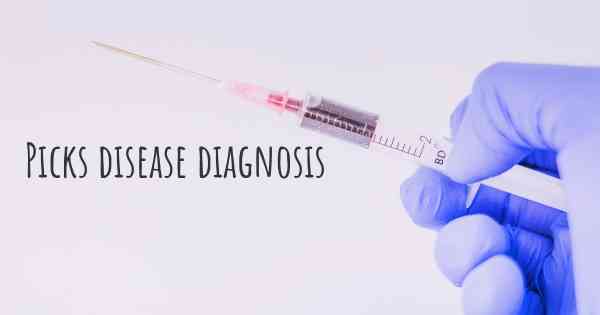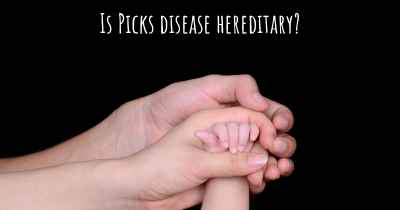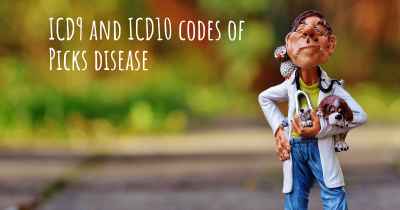How is Picks disease diagnosed?
See how Picks disease is diagnosed. Which specialists are essential to meet, what tests are needed and other useful information for the diagnosis of Picks disease

Pick's disease, also known as frontotemporal dementia, is a rare neurodegenerative disorder that primarily affects the frontal and temporal lobes of the brain. It is characterized by progressive changes in behavior, personality, and language abilities. Diagnosing Pick's disease can be challenging as its symptoms can overlap with other forms of dementia. However, a combination of clinical evaluations, medical tests, and imaging techniques can help in reaching an accurate diagnosis.
Clinical Evaluation:
The first step in diagnosing Pick's disease involves a thorough clinical evaluation by a healthcare professional, typically a neurologist or geriatric psychiatrist. The doctor will review the patient's medical history, including any family history of dementia or neurological disorders. They will also conduct a detailed assessment of the patient's symptoms, behavior, and cognitive abilities.
Neuropsychological Testing:
Neuropsychological tests are crucial in evaluating cognitive function and identifying specific patterns of impairment. These tests assess various cognitive domains such as memory, attention, language, problem-solving, and executive function. In Pick's disease, patients often exhibit significant changes in behavior, social cognition, and language skills, which can be detected through these tests.
Brain Imaging:
Imaging techniques play a vital role in the diagnosis of Pick's disease. Magnetic Resonance Imaging (MRI) is commonly used to visualize the brain and detect any structural abnormalities. In Pick's disease, MRI scans may reveal atrophy (shrinkage) in the frontal and temporal lobes, which is a characteristic feature of the condition. These changes can help differentiate Pick's disease from other forms of dementia.
Positron Emission Tomography (PET) Scan:
PET scans can provide valuable information about brain metabolism and function. In Pick's disease, PET scans may show reduced glucose metabolism in the frontal and temporal lobes, indicating the presence of neurodegeneration. This imaging technique can help support the diagnosis and distinguish Pick's disease from other types of dementia.
Cerebrospinal Fluid Analysis:
An analysis of cerebrospinal fluid (CSF) can be performed to detect specific biomarkers associated with Pick's disease. This procedure involves a lumbar puncture, where a small amount of CSF is extracted from the lower back. The collected fluid is then examined for the presence of abnormal proteins, such as tau and amyloid-beta, which are commonly associated with neurodegenerative disorders.
Genetic Testing:
In some cases, genetic testing may be recommended, especially if there is a family history of dementia. Certain genetic mutations, such as those in the MAPT gene, have been linked to an increased risk of developing Pick's disease. Genetic testing can help identify these mutations and provide further confirmation of the diagnosis.
Exclusion of Other Conditions:
Since the symptoms of Pick's disease can resemble other forms of dementia, it is essential to rule out other potential causes. The healthcare professional will conduct tests to exclude conditions such as Alzheimer's disease, vascular dementia, and other neurological disorders that may present with similar symptoms.
Collaborative Approach:
Diagnosing Pick's disease often requires a collaborative approach involving multiple healthcare professionals, including neurologists, psychiatrists, neuropsychologists, and radiologists. The combination of clinical evaluations, neuropsychological testing, brain imaging, and other diagnostic procedures helps in reaching an accurate diagnosis.
In conclusion, diagnosing Pick's disease involves a comprehensive evaluation of the patient's symptoms, cognitive abilities, and medical history. Clinical assessments, neuropsychological testing, brain imaging, cerebrospinal fluid analysis, genetic testing, and the exclusion of other conditions are all important components of the diagnostic process. It is crucial to consult with healthcare professionals who specialize in neurodegenerative disorders to ensure an accurate diagnosis and appropriate management of Pick's disease.
Posted Mar 4, 2017 by Jay 1000
Posted Mar 4, 2017 by Maggie 1000








